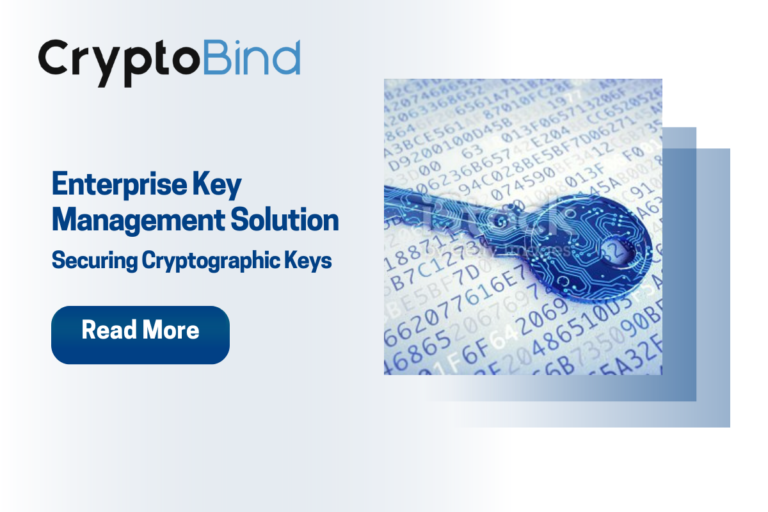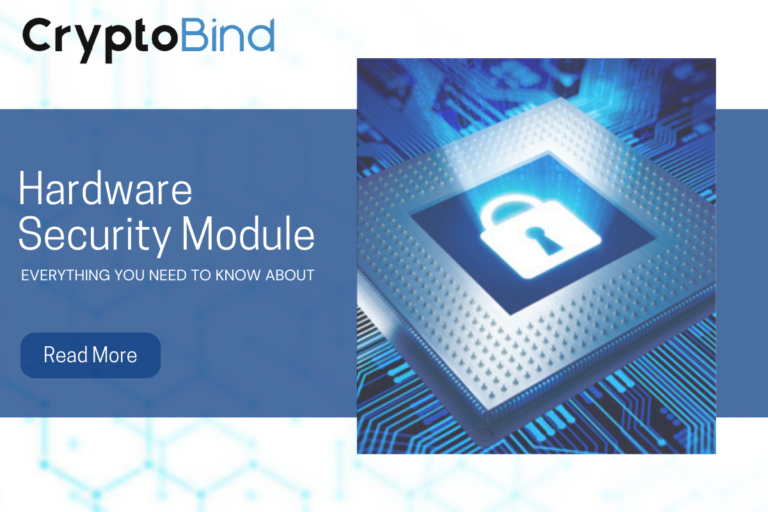CryptoBind HSM is now built with FIPS 140-3 Level 3 Certified Cryptographic Boundary
In the ever-evolving landscape of digital security, staying ahead of the curve is paramount. Today, we are delighted to announce a significant milestone for CryptoBind HSM: our solution is now fully compliant with FIPS 140-3 Level 3 standards. This achievement underscores our commitment to providing top-tier security solutions for safeguarding cryptographic keys and sensitive data. Let’s delve into the FIPS standards and their implications for organizations.
Understanding FIPS 140-3 Level 3 Requirements
FIPS (Federal Information Processing Standards) 140-3 is the latest version of the standard governing cryptographic modules. Level 3 of this standard offers robust protection against unauthorized access to cryptographic modules and sensitive information. It is the third-highest level under FIPS 140-3, featuring several key security requirements
Physical Security
Cryptographic modules must be protected against unauthorized access, tampering, theft, and damage. These modules should be designed to withstand physical attacks such as drilling, cutting, and probing. Additionally, they must be housed in secure facilities equipped with access controls, video surveillance, and intrusion detection systems.
Cryptographic Key Management
A robust key management system is essential, ensuring the secure generation, storage, distribution, and destruction of cryptographic keys. The system should utilize strong cryptographic algorithms, like the Advanced Encryption Standard (AES), and include mechanisms for key backup, recovery, and destruction.
Cryptographic Operations
Cryptographic operations must be conducted securely and reliably, using approved algorithms and protocols such as Transport Layer Security (TLS), Secure Sockets Layer (SSL), and IPsec. The module must incorporate error detection and correction mechanisms and handle exceptions and failures in cryptographic processes effectively.
Self-Tests and Tamper Evidence
Modules must feature self-tests and tamper-evidence mechanisms to detect and prevent unauthorized modifications or tampering with hardware or software. Periodic self-tests should verify the integrity and authenticity of the module’s firmware, hardware, and software.
Design Assurance
A strong design assurance process is crucial, ensuring that security requirements are met throughout the module’s lifecycle. This includes independent third-party evaluation and verification of the module’s design. The module must be tested against FIPS 140-3 security requirements and adhere to secure coding practices, security testing, and comprehensive security documentation.
Security Management
An effective security management system should include policies, procedures, and controls to manage the module’s security risks. This system must support auditing, monitoring, reporting security events, and responding to security incidents and vulnerabilities.
Level 3 of FIPS 140-3 provides robust protection against both physical and logical attacks, requiring advanced key management, secure cryptographic operations, comprehensive self-tests, tamper evidence, rigorous design assurance, and stringent security management. These requirements are designed to protect sensitive information and ensure the integrity and availability of cryptographic modules.
Key Differences Between FIPS 140-2 and FIPS 140-3
The transition from FIPS 140-2 to FIPS 140-3 introduces several significant updates and enhancements:
Functions
- FIPS 140-2: Established by the US federal government, this standard required modules to support both a crypto officer and a user role, with the maintenance role being optional.
- FIPS 140-3: The latest version maintains the crypto officer, user, and maintenance roles but makes only the crypto officer role mandatory. This flexibility allows organizations to choose roles based on their specific needs. The crypto officer remains responsible for the security of cryptographic activities, while the user role is for those who need access to protected information. The maintenance role, though optional, is crucial for regular system inspections to maintain security.
Cryptographic Modules
- FIPS 140-2: Initially created in 2001, this standard assumed all modules were hardware. Over time, the guidelines were expanded to include hybrid, software, and firmware modules.
- FIPS 140-3: Explicitly accounts for hardware, firmware, software, hybrid, and hybrid firmware modules. It includes additional requirements for cryptographic module manufacturers, focusing on key management, authentication, and the protection of cryptographic keys within the module’s boundaries. FIPS 140-3 also imposes stricter physical and virtual security measures, enhancing the reliability and security of cryptographic modules.
Authentication Levels
- FIPS 140-2: Based on ISO 19790, it defines four levels of authentication, with Level 1 requiring no authentication, Level 2 requiring role-based authentication, and Level 3 requiring identity-based authentication. It does not specify authentication requirements for Level 4.
- FIPS 140-3: Adds an extra layer of authentication, mandating multi-factor identity-based authentication at Level 4. This ensures higher security standards and helps organizations protect their networks, systems, and data more effectively.
Cryptographic Boundaries
- FIPS 140-2: Hybrid modules were limited to a Level 1 validation, providing only basic security.
- FIPS 140-3: Removes these restrictions, allowing hybrid modules to be validated at any level. This broader scope offers more comprehensive and secure methods for cryptographic boundary protection. However, this also means more documentation and procedures may be required to ensure compliance and manage security vulnerabilities.
Overall, FIPS 140-3 represents a significant update over FIPS 140-2, providing enhanced security features and greater flexibility to meet the evolving needs of organizations.
Implications for Organizations
For organizations handling sensitive information, ensuring compliance with FIPS standards is paramount. FIPS 140-3 Level 3 compliance provides a seal of assurance, indicating that cryptographic modules meet stringent security requirements, thereby mitigating the risk of unauthorized access or tampering.
Conclusion
In an era marked by escalating cybersecurity threats, adherence to stringent security standards is non-negotiable. CryptoBind HSM‘s FIPS 140-3 Level 3 compliance reaffirms our commitment to delivering advanced security solutions that empower organizations to safeguard their most valuable assets. As threats evolve, we remain consistent in our mission to provide robust, reliable, and future-proof security solutions.
Moreover, FIPS 140-3 introduces the capability to certify Post-Quantum Cryptography (PQC) algorithms. This important enhancement prepares cryptographic modules to confront the challenges and risks posed by quantum attacks. Deploying FIPS 140-3 validated security solutions is crucial for establishing a quantum-safe and agile security posture. This proactive stance ensures organizations not only maintain current protection levels but also bolster resilience against future advancements and threats.








